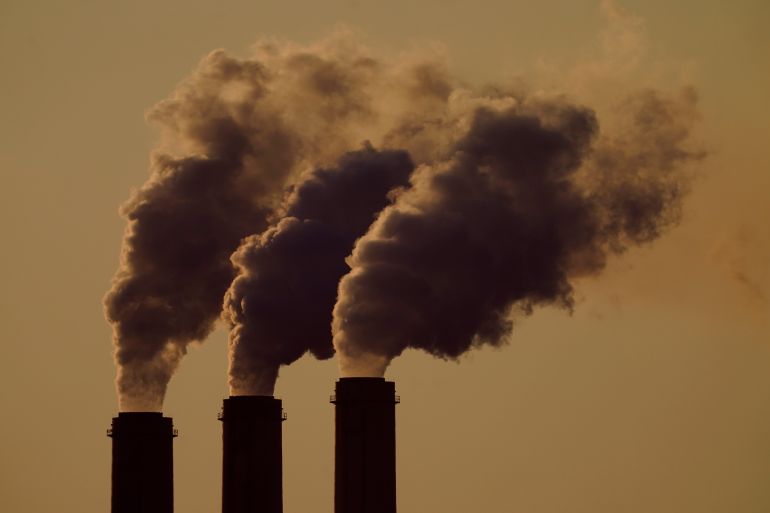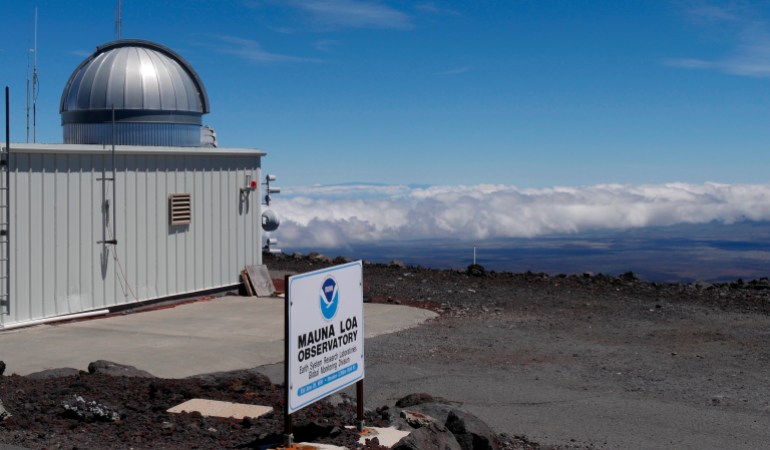Earth’s CO2 level passes a new climate milestone
The atmospheric CO2 level in May was 50 percent higher than during the pre-industrial era, raising fears about climate change.

Concentrations of carbon dioxide in the atmosphere in May were 50 percent higher than during the pre-industrial era, reaching levels not seen on Earth for about four million years, the main US climate agency said on Friday.
The amount of carbon dioxide in the atmosphere passed the threshold of 420 parts per million (ppm), the National Oceanic and Atmospheric Administration (NOAA) said. PPM is a unit of measurement used to quantify pollution in the atmosphere.
Keep reading
list of 4 itemsNew report a ‘stark indictment’ of rich nations’ climate failure
‘Now or never’ to avoid climate catastrophe: UN
Japan’s greenhouse gas emissions fall to lowest on record
Last May, the rate was 419ppm, and in 2020, 417ppm.
Global warming caused by humans, particularly through the production of electricity using fossil fuels, transport, the production of cement, or even deforestation, is responsible for the new high, the NOAA said.
CO2 is a greenhouse gas that traps heat, gradually causing global warming. It remains in the atmosphere and oceans for thousands of years.
Its warming effect is already causing dramatic consequences, noted NOAA, including the multiplication of heatwaves, droughts, fires or floods.

“Carbon dioxide is at levels our species has never experienced before – this is not new,” said Pieter Tans, a scientist with the Global Monitoring Laboratory at NOAA.
“We have known about this for half a century, and have failed to do anything meaningful about it. What’s it going to take for us to wake up?”
Before the Industrial Revolution
The measurements are taken at the Mauna Loa observatory in Hawaii, ideally located high on a volcano, which allows it to escape the possible influence of local pollution.
Before the Industrial Revolution, levels of CO2 held steady at about 280ppm, a level maintained for approximately 6,000 years of human civilisation that preceded industrialisation, according to NOAA.
The level now is comparable to what it was between 4.1 and 4.5 million years ago, when CO2 levels were near or above 400ppm, the NOAA said.
At that time, sea levels were between five and 25 metres higher than now, high enough to submerge many of today’s major cities. Large forests also occupied parts of the Arctic, according to studies.
“The science is irrefutable: humans are altering our climate in ways that our economy and our infrastructure must adapt to,” NOAA Administrator Rick Spinrad was quoted as saying by the climate agency website.